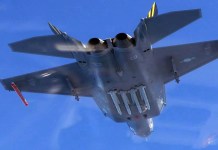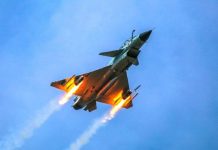Amid tensions in the South China Sea, China’s southernmost Hainan province will reportedly launch four satellites by the end of this year, purportedly to track the movement of enemy ships.
According to the state-owned China Daily, the Hainan-1 remote sensing satellites will be the island’s first “space-based network”. Two more satellites — Sanya 1 and two Sansha 1 — will join this constellation in the next 2-3 years.
The launch is expected to take place from Hainan Island, located in the South China Sea. The island which houses China’s most important military base provides Beijing with a clear view of the activities and gives it unrestricted and direct access to the sea.
“Four Hainan 1-series optical Earth-observation satellites have been assembled and are scheduled to be put into orbit by the second flight of the Long March 8 medium-lift carrier rocket from the Wenchang Space Launch Center in northeastern Hainan” China Daily quoted Yang Tianliang, chief designer of the Hainan Earth-Observation Satellite Constellation System, as saying.
The Hainan 1-01 is equipped with a wide-angle, high-definition camera, which would help identify and monitor mobile objects on the sea, especially ships. It will be used to keep a check on ports, islands, and ships.
China launched its Long March-7A Y2 carrier rocket on Friday, which will be used for in-orbit testing of new technologies, from the Wenchang Spacecraft Launch Site in south China's island province of Hainan.#GLOBALink pic.twitter.com/f9cnMkx5mZ
— China Xinhua News (@XHNews) March 12, 2021
Its automatic identification system can receive signals including position, course, and speed data sent by a moving ship thus, keeping an eye on the maritime conditions.
The Long March 8 is China’s new-generation launch vehicle; it had its first successful lift-off from Wenchang last month, carrying a classified experimental payload that was put into geosynchronous transfer orbit.
While Yang claimed that an important goal of this program is to ensure cooperation aimed at the gradual formation of the commercial space industry, he did mention that “a constellation of 10 satellites will be capable of monitoring all of the South China Sea in real-time, thus helping China better safeguard its sovereignty, develop the region and deal with contingencies”.
As reported by The EurAsian Times, the US and the Philippines have begun a two-week exercise amid the US-China tensions which escalated late last week when China’s aircraft carrier Liaoning maneuvered through Japan’s Miyako straits sailing south towards the Pacific.
In response to this, the Japanese and American forces dispatched their own warships and surveillance aircraft to chase the Chinese fleet.
The launch of four new Hainan 1 satellites will purportedly keep a tab on the movement of enemy ships in the region. While QUAD member countries along with Southeast Asian nations have shown grave concern over China’s territorial claim over the South China Sea, Beijing’s trajectory does not show any sign of backing off from its aggressive policy.
Follow EurAsian Times on Google News




